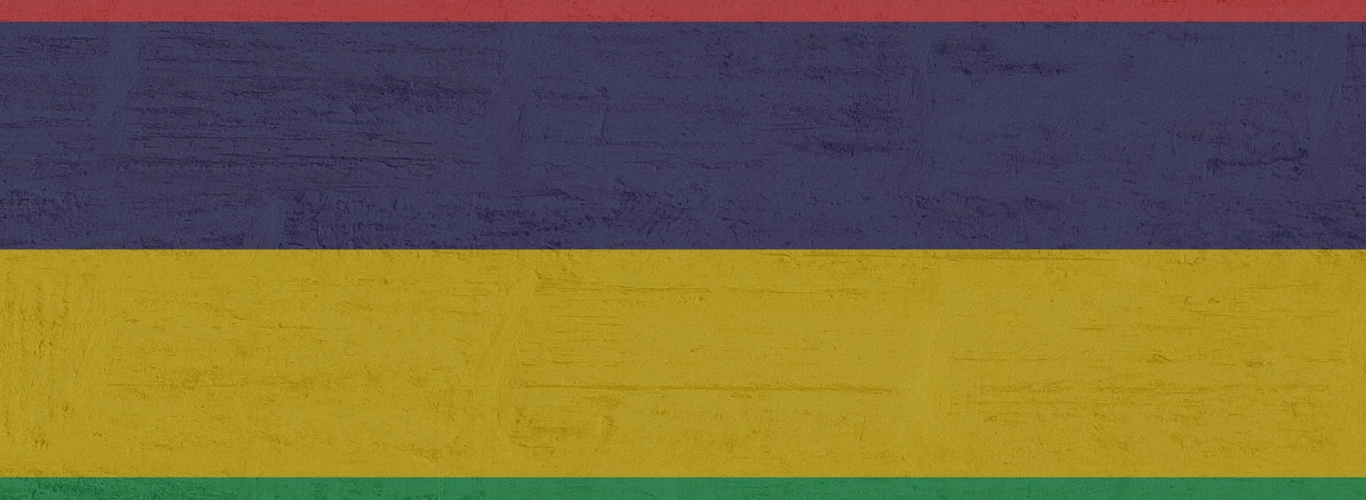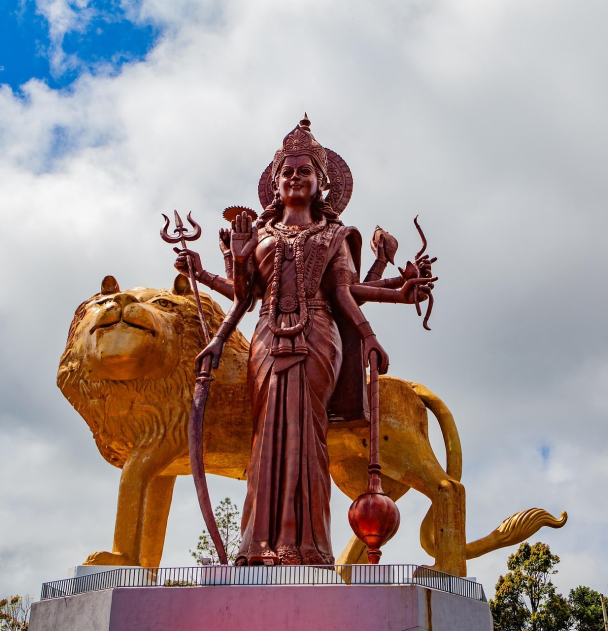Mauritius, the pearl of the Indian Ocean, is much more than just a tropical paradise with idyllic beaches. Its rich, deep, and complex history has shaped its unique identity.
A true crossroads of civilizations and cultural influences, the island has been shaped by successive waves of colonization and immigration, from the first Arab explorers to European settlers. The painful period of slavery, a true scar in Mauritian history, also contributed to the country’s ethnic diversity, with the arrival of African and Malagasy populations, followed later by Indian and Chinese workers.
This mosaic of cultures has given rise to a unique society with a plural identity, where different religions, languages, and traditions coexist in harmony.

On the occasion of Mauritius’ Independence Day, gained in 1968 and celebrated this Wednesday, March 12, 2025, let's (re)discover the key dates that have shaped the history of Mauritius.
Through the centuries, discover the key dates that have shaped the history of Mauritius.
Pre-colonial Period: Before the 16th Century
This period remains shrouded in mystery, with few written records. Arab sailors likely discovered Mauritius and the Mascarene archipelago during the Middle Ages, at an unknown date. Mauritius was then referred to by its Arabic name, Dina Arobi ("abandoned island"), while Rodrigues was known as Dina Mozare ("eastern island").
Portuguese Period: 16th Century
Signed in 1494 between the crowns of Spain and Portugal, the Treaty of Tordesillas granted Portugal free rein to exploit the lands and resources of the region. From 1500 onwards, the Portuguese used force to seize Arab trading posts along the African coast of the Indian Ocean. Between 1500 and 1513, Portuguese navigators became the first Europeans to set foot on Mauritius, naming it Ilha do Cerne. The exact date and the name of the discoverer vary among historians:
- Diogo Dias in 1500 or 1505
- Domingo Fernandez in 1511
- Pedro de Mascarenhas in 1513
However, the Portuguese did not establish a permanent settlement on the island, which remained uninhabited until the arrival of Dutch colonists.
Dutch Period: 1598 to 1710
At the end of the 16th century, Dutch sailors from the Dutch East India Company began exploring the Indian Ocean. They were the first to show genuine interest in Mauritius for its natural resources and strategic position on the route to India.
- In 1598, a Dutch fleet under the command of Admiral Wybrand Van Warwyck landed at Grand-Port and named the island Mauritius in honor of Prince Maurice of Nassau.
- In 1638, the Dutch made their first attempt at colonization. A governor and about twenty families settled on the island, accompanied by the first enslaved people from Africa and Madagascar, whose descendants are part of today’s Creole population.
The settlers introduced sugarcane cultivation, exploited the island’s natural resources (especially its precious wood), and brought new domestic animals such as dogs, rats, pigs, and goats. However, intensive hunting and the introduction of predatory species disrupted the local ecosystem, leading to the extinction of endemic species such as the famous dodo and the giant tortoise. Systematic deforestation depleted valuable timber resources, particularly ebony wood, and recurring tropical cyclones destroyed plantations.
Even today, Mauritian wildlife and flora still bear the scars of this period of environmental destruction.
- In 1710, the Dutch voluntarily abandoned Mauritius.
French Period: 1715 to 1810
- In September 1715, France sent a warship to Mauritius to claim it in the name of King Louis XIV. The island was then renamed "Isle de France." This provided France with a strategic base to secure commercial transport with India.
- In 1721, true French colonization began with the French East India Company, which took possession of the island and encouraged the arrival of thousands of enslaved people from Madagascar and East Africa. From the interaction between French settlers and African slaves, a new language was born: Creole.
- In 1735, the arrival of a new governor, Count Mahé de La Bourdonnais, marked the beginning of French supremacy in the Indian Ocean. He built fortifications and roads, founded the Port of Port-Louis, and established his headquarters there. Within a few years, Isle de France became a profitable colony. La Bourdonnais expanded forestry and coffee cultivation, while large sugar plantations with colonial-style mansions began to emerge.
- By 1767, Isle de France had reached 20,000 inhabitants, including 15,000 slaves. After France's military defeat against the British in 1763, the French East India Company was on the verge of bankruptcy and ceded the Mascarene Islands to the King of France. That same year, Pierre Poivre was appointed intendant of the island, turning the Mascarene Islands into a prosperous and well-organized colony, envied by the British. A botanist, Poivre is credited with creating Pamplemousses Garden, one of the most beautiful botanical gardens in the world.
- By the late 18th century, Isle de France became a strategic naval base during conflicts between France and Britain. The Mascarene archipelago significantly disrupted British trade in the Indian Ocean, making it increasingly desirable to the British. However, despite the adoption of the Declaration of the Rights of Man and of the Citizen in 1789 and the abolition of slavery in 1794, these laws did not apply to Isle de France, due to economic interests—a relief for the colonists but a tragedy for the enslaved people.
British Period: 1810 to 1968
- At the end of 1810, 10,000 British soldiers landed at Cap Malheureux, in the north of Mauritius, despite their historic defeat against the Napoleonic fleet at the Battle of Grand-Port in August of the same year. Within a few days, the French army surrendered, and the island came under British control.
- Signed on May 30, 1814, the Treaty of Paris officially sealed the cession of the Mascarene archipelago to Britain, except for Réunion (Bourbon Island), which remained French. Isle de France was renamed Mauritius, and social and economic changes quickly followed. The new British government allowed colonists to keep their religion, laws, and customs. Since Creole and French were considered part of these customs, they remained widely spoken among the population, as did the Napoleonic Code, which remained in effect.
- In 1832, English became mandatory for all official communication with British authorities and administration.
- On February 1, 1835, slavery was abolished across all British colonies. By then, the Mauritian population exceeded 100,000, including 80,000 freed slaves.
- Between 1835 and 1865, over 200,000 Indian and Chinese immigrants, known as "indentured laborers", arrived in Mauritius to replace the freed slaves in agricultural work. Indians quickly became the majority of plantation workers, often laboring under conditions close to slavery. This mass immigration profoundly transformed the demographics and culture of the island. From 200,000 inhabitants in 1860, Mauritius’ population surged to 500,000 by 1910. In just a few decades, 450,000 Indians had arrived—today, 70% of the Mauritian population are their descendants. However, despite economic development, social inequalities worsened due to the lack of social reforms.
- Between 1866 and 1868, cholera and malaria epidemics claimed at least 50,000 lives, wiping out half the population of Port-Louis.
- The late 19th century was a period of economic decline, increasing poverty, and growing social tensions for Mauritius.
- By the 1930s, popular movements advocating democratization began to emerge, laying the foundation for the first calls for independence.
- Between 1939 and 1942, World War II further crippled Mauritius’ economy. Maritime connections were cut off, isolating the island from the rest of the world. In 1942, the British built an airport in Mauritius for military purposes.
- In 1958, universal suffrage was introduced in Mauritius. A year later, in his famous "Wind of Change" speech, British Prime Minister Harold Macmillan acknowledged that the best course for Britain was to grant full independence to its colonies.
- By 1965, Mauritius had achieved economic stability, while political life and the local press had grown significantly. The island began preparing for independence.
- In 1967, the Mauritian Labour Party won the majority in the Assembly, forcing the United Kingdom to consider granting independence to the island.
- In January 1968, riots broke out in Port-Louis, resulting in 25 deaths.
1968: From Mauritius' Independence to Today
- On March 12, 1968, Mauritius declared independence and adopted a new constitution. As a Commonwealth realm, Queen Elizabeth II remained Head of State as Queen of Mauritius, while Sir Seewoosagur Ramgoolam became the first Prime Minister of independent Mauritius.
- In 1971, the opposition party Mauritian Militant Movement (MMM), founded in 1969 and led by Paul Bérenger, called for a series of port strikes. The government, a coalition between the Labour Party and the PMSD (Parti Mauricien Social-Démocrate), imposed a state of emergency, restricting civil liberties and press freedom.
- On December 16, 1975, the voting age was lowered to 18, following the student uprising of May 1975.
- In June 1982, the MMM won 63% of the votes and secured all seats in Parliament. A MMM-PSM coalition government was elected. However, tensions between Paul Bérenger and the new Prime Minister Anerood Jugnauth escalated. By 1983, to prevent a possible coup d'état, Indian Prime Minister Indira Gandhi went as far as planning a military intervention involving the Indian Navy and Army. Nine months after the election, the MMM-PSM coalition collapsed, and in August 1983, Anerood Jugnauth was re-elected as Prime Minister after the victory of his new MSM-Labour-PMSD coalition.
- Between 1982 and 1995, Mauritius underwent significant economic liberalization, with an average growth rate of nearly 7% from 1984 to 1988. The tourism and retail sectors rapidly expanded, while the sugar industry declined in economic dominance.
- On March 12, 1992, the Mauritian Parliament voted overwhelmingly to abolish the monarchy. Mauritius became a republic with a presidential system but remained a member of the Commonwealth.
- On June 30, 1992, Cassam Uteem became President of the Republic of Mauritius. He resigned in 2002.
- In 1995, Navin Ramgoolam, son of Sir Seewoosagur Ramgoolam, considered the "Father of the Nation," was elected Prime Minister.
- On February 21, 1999, the death of Mauritian seggae singer Kaya in police custody triggered riots in Port-Louis.
- On June 5, 2015, Ameenah Gurib-Fakim became the first female President of Mauritius to hold full executive powers.
- In 2024, Dharam Gokhool was elected President of the Republic, while Navin Ramgoolam was appointed Prime Minister after his two previous terms (1995-2000 and 2005-2014).
Discover Mauritian History by Staying in Mauritius
Domaine d’Anbalaba is nestled in the southwest of Mauritius, just steps away from the iconic Morne Brabant Mountain, a place of historical significance and remembrance. It is also just a few kilometers from Grand Bassin (Ganga Talao), a sacred site for Mauritians of the Hindu faith.
With nearby temples and several colonial-era estates, such as St Aubin and Les Aubineaux, the estate serves as the perfect starting point to explore numerous historical and cultural sites.
Don’t wait any longer, immerse yourself in the heart of Mauritius to learn and understand the island's rich history and cultural diversity.
Our team will craft the ideal itinerary to help you discover all the must-see sites of Mauritian history and take care of your bookings!

